The bloody events of February 14, 1929 began nearly five years before with the murder of Dion O'Banion, the leader of Chicago's north side mob. At that time, control of bootleg liquor in the city raged back and forth between the North Siders, run by O'Banion, and the south side Outfit, which was controlled by Johnny Torrio and his henchman, Al Capone. In November 1924, Torrio ordered the assassination of O'Banion and started an all-out war in the city. The North Siders retaliated soon afterward and nearly killed Torrio outside of his home. This brush with death led to him leaving the city and turning over operations to Capone, who was almost killed himself in September 1926. The following month, Capone shooters assassinated Hymie Weiss, who had been running the north side mob after the death of O'Banion. His murder left the operation in the hands of George "Bugs" Moran, a long-time enemy of Capone. For the most part, Moran stood alone against the Capone mob, since most of his allies had succumbed in the fighting. He continued to taunt his powerful enemy and looked for ways to destroy him.
In early 1929, Moran sided with Joe Aiello in another attack against Capone. He and Aiello reportedly gunned down Pasquillano Lolordo, one of Capone's men, and Capone vowed that he would have him wiped out on February 14. He was living on his estate outside of Miami at the time and put in a call to Chicago. Capone had a very special "valentine" that he wanted delivered to Moran.
Through a contact in Detroit, Capone arranged for someone to call Moran and tell him that a special shipment of hijacked whiskey was going to be delivered to one of Moran's garages on the north side. Adam Heyer, a friend of Moran, owned the garage and it was used as a distribution point for north side liquor. A sign on the front of the building at 2122 North Clark Street read "S-M-C Cartage Co. Shipping - Packing - Long Distance Hauling". Moran received the call at the garage on the morning of February 13 and he arranged to be there to meet the truck the next day.
On the morning of February 14, a group of Moran's men gathered at the Clark Street garage. One of the men was Johnny May, an ex-safecracker who had been hired by Moran as an auto mechanic. He was working on a truck that morning, with his dog, a German Shepherd named Highball, tied to the bumper. In addition, six other men waited for the truck of hijacked whiskey to arrive. The men were Frank and Pete Gusenberg, who were supposed to meet Moran and pick up two empty trucks to drive to Detroit and pick up smuggled Canadian whiskey; James Clark, Moran's brother-in-law; Adam Heyer; Al Weinshank; and Reinhardt Schwimmer, a young optometrist who had befriended Moran and hung around the liquor warehouse just for the thrill of rubbing shoulders with gangsters.
George Moran was already late for the morning meeting. He was due to arrive at 10:30 but didn't even leave for the rendezvous, in the company of Willie Marks and Ted Newberry, until several minutes after that. As the seven men waited inside of the warehouse, they had no idea that a police car had pulled up outside, or that Moran had spotted the car as he was driving south on Clark Street and rather than deal with what he believed was a shakedown, stopped at the next corner for a cup of coffee.
Five men got out of the police car, two of them in uniforms and three in civilian clothing. They entered the building and a few moments later, the clatter of machine gun fire broke the stillness of the snowy morning. Soon after, five figures emerged and they drove away. May's dog, inside of the warehouse, began barking and howling.
The landlady in the next building, Mrs. Jeanette Landesman, was bothered by the sound of the dog and she sent one of her boarders, C.L. McAllister, to the garage to see what was going on. He came outside two minutes later, his face a pale white color. He ran frantically up the stairs to beg Mrs. Landesman to call the police. He cried that the garage was full of dead men!
The police were quickly summoned and on entering the garage, were stunned by the carnage. Moran's men had been lined up against the rear wall of the garage and had been sprayed with machine-guns. Pete Gusenberg had died kneeling, slumped over a chair. James Clark had fallen on his face with half of his head blown away and Heyer, Schwimmer, Weinshank and May were thrown lifeless onto their backs. Only one of the men survived the slaughter and he lived for only a few hours. Frank Gusenberg had crawled from the blood-sprayed wall where he had fallen and dragged himself into the middle of the dirty floor. He was rushed to the Alexian Brothers Hospital, barely hanging on. Police sergeant Clarence Sweeney, who had grown up on the same street as Gusenberg, leaned down close to Frank and asked who had shot him. "No one --- nobody shot me," he groaned and he died later that night.
The death toll of the massacre stood at seven but the killers had missed Moran. When the police contacted him later and told him what had happened at the garage, he "raved like a madman". To the newspapers, Moran targeted Capone as ordering the hit. The authorities claimed to be baffled though, since Capone was in Florida at the time of the massacre. When he was asked to comment on the news, Capone stated, "the only man who kills like that is Bugs Moran". At the same time, Moran was proclaiming that "only Capone kills guys like that".
And Moran was undoubtedly right. The murders broke the power of the north side gang and while there have been many claims as to who the actual shooters were that day, most likely they included John Scalise, Albert Anselmi and "Machine Gun" Jack McGurn, all of whom were some of Capone's most trusted men. All three men, along with Joseph Guinta, were arrested but McGurn had an alibi and Scalise and Guinta were killed before they could be tried.
The St. Valentine's Day Massacre marked the end of any significant gang opposition to Capone but it was also the act that finally began the decline of Capone's criminal empire. He had just gone too far and the authorities, and even Capone's adoring public, were ready to put an end to the bootleg wars.
Perhaps the strangest bit of history in regards to the massacre involved the fact that Capone had not seen the last of one of the men killed on that fateful day. In May 1929, Capone slipped out of town to avoid the heat that was still coming down from the massacre and to avoid being suspected in the deaths of several of the men believed responsible for the killing of the Moran gang. While in Philadelphia, he and his bodyguard, Frankie Rio, were picked up on charges of carrying concealed weapons and were sentenced to a year in prison. They eventually ended up in the Eastern State Penitentiary.
Capone continued to conduct business from prison. He was given a private cell and allowed to make long-distance telephone calls from the warden's office and to meet with his lawyers and with Frank Nitti, Jake Guzik and his brother, Ralph, all of whom made frequent trips to Philadelphia. He was released two months early on good behavior and when he returned to Chicago, he found himself branded "Public Enemy Number One". It was while he was incarcerated in Pennsylvania that Capone first began to be haunted by the ghost of James Clark, one of the massacre victims and the brother-in-law of George Moran. While in prison, other inmates reported that they could hear Capone screaming in his cell, begging "Jimmy" to go away and leave him alone.
After Capone returned to Chicago, he took up residence at the Lexington Hotel and while here, would report his most frequent encounters with the ghost. While living at the Lexington Hotel, there were many times when Capone's men would hear from begging for the specter to leave him in peace. On several occasions, bodyguards broke into his rooms, fearing that someone had gotten to their boss. Capone would then tell them of Clark's ghost.
Whether the ghost was real or not, Capone certainly believed that he was. The crime boss even went so far as to contact a psychic named Alice Britt to get rid of Clark's angry spirit. Not long after a séance was conducted to try and rid Capone of the vengeful spirit, Hymie Cornish, Capone's personal valet also believed that he saw the ghost. He entered the lounge of Capone's apartment and spotted a tall man standing near the window. He demanded to know the man's identity but the shadowy figure slipped behind a curtain and out of sight. Cornish immediately summoned two of his employer's bodyguards but a search of the room revealed there was no one there but Al Capone, who continued to insist the figure had been Jimmy Clark.
Years later, Capone would also insist that Jimmy Clark followed him to the grave.
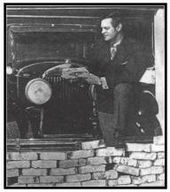

The club continued to operate for a few years and when it closed the owner placed the 417 bricks into storage. He then offered them for sale with a written account of the massacre. He sold the bricks for $1000 each, but soon found that he was getting back as many as he sold. It seemed that anyone who bought one of the bricks was suddenly stricken with bad luck in the form of illness, financial ruin, divorce and even death. According to the stories, the bricks themselves had somehow been infested with the powerful negative energy of the massacre! Whatever became of the rest of the bricks is unknown.
Or that's what the legend says....
In recent years, other bricks have emerged that claim to have come from the wall. These were not bricks purchased from Patey but were smuggled out of the lot by construction workers and curiosity-seekers. It was said that from these bricks come the legends of misfortune and bad luck. Are these bricks authentic? The owners say they are -- but you'll have to judge for yourself!
Whatever the legend of the bricks themselves and whether or not they have somehow been "haunted" by what happened, there is little doubt about the site on Clark Street itself. Even today, people walking along the street at night have reported the sounds of screams and machine guns as they pass the site. The building is long gone but the area is marked as a fenced-off lawn that belongs to the nearby nursing home. Five trees are scattered along the place in a line and the one in the middle marks the location where the rear wall once stood. Passerby often report these strange sounds and the indescribable feeling of fear as they walk past. Those who are accompanied by dogs report their share of strangeness too....Animals appear to be especially bothered by this piece of lawn, sometimes barking and howling, sometimes whining in fear. Their sense of what happened here many years ago seems to be much greater than our own.
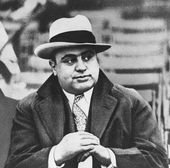
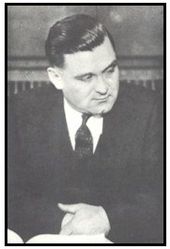
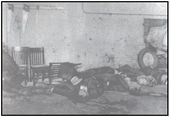



Reader Comments
to our Newsletter